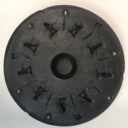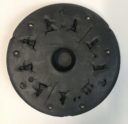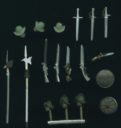The Assault Group: Spanier und Niederländer Preview
The Assault Group arbeiten an neuen Miniaturen für Spanier und Niederländer der Periode 1565 – 1600.
Dutch & Spanish moulds
As part of our work on the Long War range of miniatures, I have today been master moulding the Infantry dolls, used for both the Spanish troops, and their Dutch adversaries.
Dutch & Spanish Dolls
Dolls are used in the pre-production stages of our miniatures to ensure uniformity of scale, and where necessary dress and equipment consistency.
We’ve made a variety of Infantry dolls, for the period 1565 -1600, some of which will be used by by both sides.
Those shown above have a selection of jerkins and waist coats, and have breeches and stockings.
These WiP models have stuffed over-shorts, and large peas-cod fronts, which can be worked up into breast plates if necessary.
Two of these three have shorts and bare feet, and will be combined with the third to make up packs of ‘Sea Beggars’, early period irregular raiders.
Finally in the mould this afternoon, were more weapons and equipment, swords, muskets, arquebuses and a selection of helmets, some of which Nick Collier is happy with, some others less so… We’ll mould these up and see how they all turn out, and make some decisions when we have them in hand.
Oh and this chap… which I honestly cant remember what we are going to do with…
The castings from these moulds will go to the Sculptor, Mr Nick Collier, and hopeful will be worked up into finish models.
Your opinions all gratefully received, Comment below.
Quelle: The Assault Group



















Interessant zu sehen, das die auch ihre Mastermoulds mit Naturkautschuk machen. Ich traue mich das nicht und nehme Silikon, da die Vulkanisationstemperatur viel niedriger ist.
Auch Interessant aus Herstellersicht ist, das sie wie die Perrys die Grundköper als Master giessen und dann die Variationen aufmodellieren. Hat zwar den Vorteil das alles schon uniform aussieht und deutlich schneller geht, die Details werden aber bei jedem Abformen etwas schlechter. Die Vents sind auch interessant geschnitten. Normalerweise macht man auf dem unteren Teil die Giesskanäle und auf der oberen die Vents. Hier dürfte es umgekehrt sein.